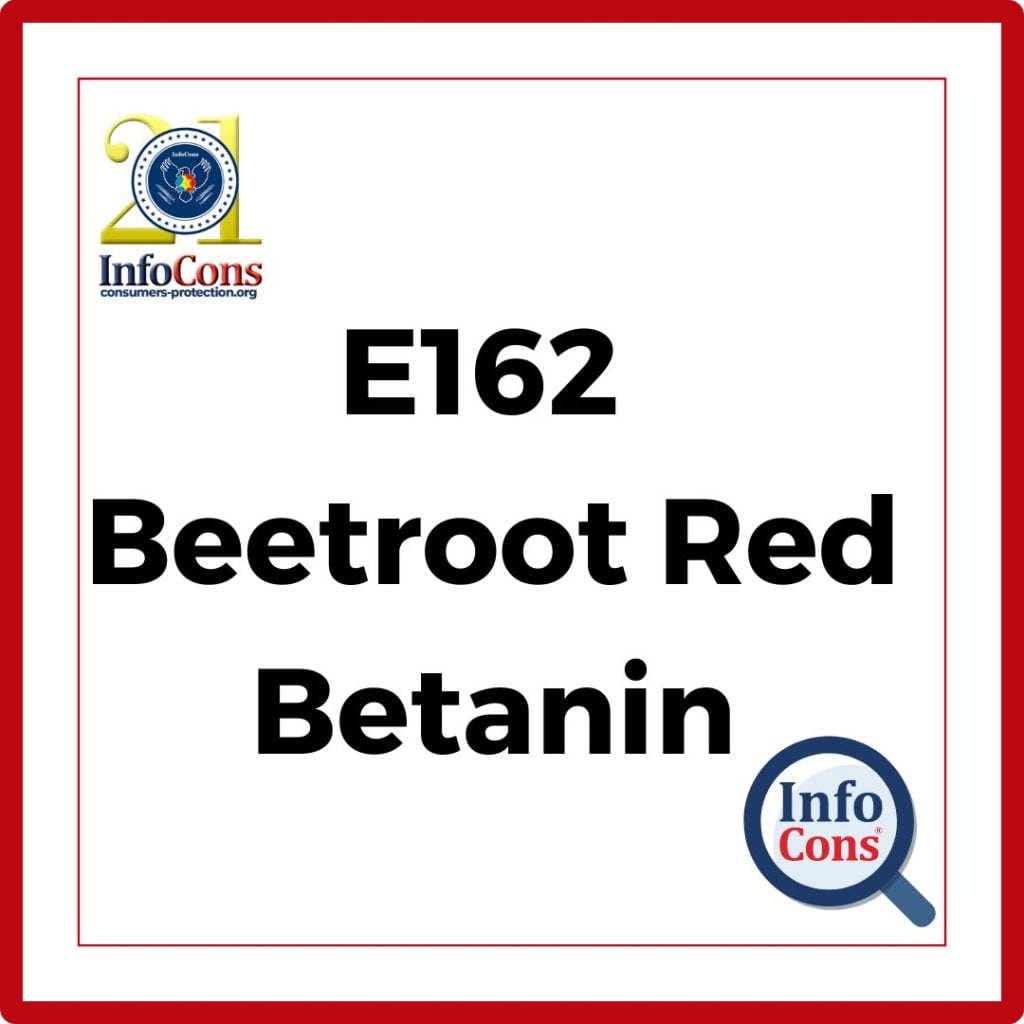What is Food Additive E162 ?
E162, Betanin, is a food additive from the category of natural colorants, obtained from red beet. Its vibrant hue, along with its natural origin, makes it a popular choice in the food industry.
E162 is a water-soluble pigment extracted from the roots of the beet plant (Beta vulgaris). It belongs to the betalain pigment family, which is responsible for the red and yellow colors in red beet and some other plants. Betanin is mainly used as a natural food coloring, providing a range of red to purple shades depending on the pH of the food product.
Read also – The dictionary with the terminology of food additives is available in the InfoCons Application ! The Consumers Protection app can be downloaded HERE.
Remarkable Properties of This Food Additive :
- Color Range: Red to purple, depending on the pH level.
- Solubility: Highly soluble in water, making it easy to incorporate into liquid formulations.
- Stability: Moderately stable, with degradation occurring at high temperatures and when exposed to light.
Read also – Food Additive E161B – Lutein – InfoCons Consumer Protection informs you !
What is the Recommended Daily Dose ?
E162 is generally recognized as safe by regulatory bodies such as the U.S. Food and Drug Administration (FDA) and the European Food Safety Authority (EFSA).
The daily dose has not been limited; however, there are some considerations to keep in mind:
- Products that can easily degrade: When degraded, E162 – betanin may alter the taste or appearance of the food product.
- Potential allergen: Although rare, some people may show sensitivity to betanin, leading to allergic reactions.
Read More – Pay attention to Alerts for food products with the European InfoCons App !
In What Products is Food Additive E162 Found ? InfoCons Consumer Protection informs you
E162 is widely used as a food colorant in various sectors of the food industry:
- Beverages: Fruit juices, soft drinks, and alcoholic beverages to provide a natural red or pink color.
- Dairy Products: Yogurts, ice creams, and flavored milk to enhance visual appeal.
- Confectionery: Candies and pastries for its vibrant red shades.
- Processed Foods: Sauces and processed meats to improve aesthetic qualities.
The versatility of E162 allows it to be used in both liquid and solid food products, offering a natural alternative to synthetic colorants.
Read the InfoCons Consumer Protection recommendation – Download the Free InfoCons App! Find everything you need to know!
Conclusions
E162, or red beet red, is a valuable natural food colorant that offers numerous benefits, including a range of vibrant colors and a natural, health-beneficial profile.
Its applications in the food industry are extensive, making it a preferred choice for manufacturers who want to enhance the appeal of their products with natural ingredients. As with any food additive, it is essential to consider safety guidelines and regulatory requirements to ensure its effective use in food products.
Look for products that have a cleaner label or use natural additives. By installing Consumer Protection InfoCons App and scanning the barcodes of food products, you can find out the number and type of food additives they contain.
Author – Cosmina Nițu
Master in Nutrition – Infant and new born nutrition
Sources:
https://www.efsa.europa.eu/en – European Food Safety Authority (EFSA)
InfoCons – European Organization for Consumers Protection and Promotion of Programs and Strategies , a full member of the World Organization Consumers International, founding member of the Federation of Consumer Associations, and member of ANEC.
